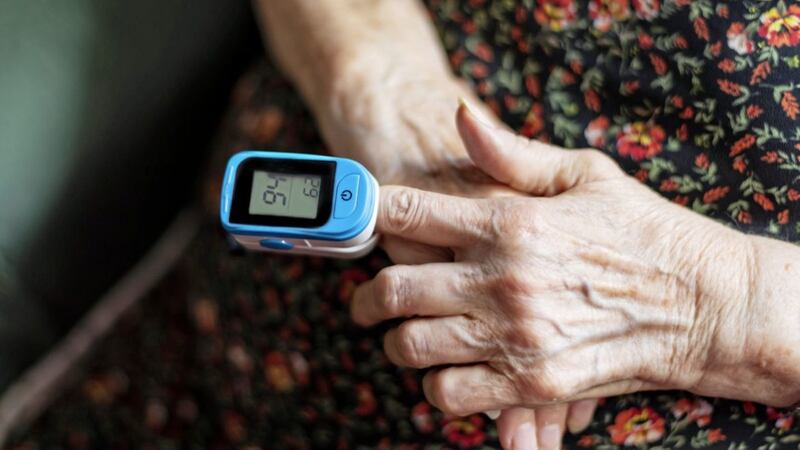COULD a £20 gadget that can be used at home to measure blood oxygen levels be a lifesaver during the coronavirus pandemic?
That’s the theory of one leading GP, who says those with serious lung problems need one.
The gadget would be particularly useful now, when most GP consultations are being done remotely, says Dr Nick Summerton, a GP and former adviser to the National Institute for Health and Care Excellence.
Pulse oximeters – matchbox-sized devices that clip over the fingertip or ear – measure the amount of oxygen being carried around the body.
One side of the clip emits beams of light, which pass through the finger to a sensor on the other side of the battery-powered unit, to give a quick readout of how well the heart and lungs are working. They can cost less than £20 online and from shops including Argos.
Oxygenated and unoxygenated blood absorb light differently, so by analysing the pattern of light that hits the sensor, it can estimate the amount of oxygen in the blood. The figure is displayed on its digital screen.
A level of above 95 per cent is normal for a healthy person at rest. But for those with chronic obstructive pulmonary disease (COPD) – an umbrella term for illnesses that cause breathing difficulties – lung damage means levels are often lower.
The devices became common in GP practices about five years ago. If the device shows a person with COPD’s blood oxygen level has fallen, their medication may be adjusted, they may be given more regular appointments or even be admitted to hospital.
More recently, these patients have started to use the devices at home. Most buy them themselves and take readings which they give to a doctor during a phone call.
Now Dr Summerton is calling for everyone with serious lung problems to be issued with a pulse oximeter on prescription, so they can monitor their oxygen levels at home if they start developing symptoms of Covid-19.
They could then quickly alert their GP to any potentially dangerous fall in their readings without having to visit the surgery.
This is important because blood oxygen levels can fall without patients showing any symptoms such as breathlessness or blueness of the lips or fingers – and an oximeter can pick up falling levels before such symptoms appear.
COPD affects more than a million people in the UK. It includes emphysema and chronic bronchitis, both of which cause breathing difficulties.
Treatments, including inhalers, can help, but some people’s breathing keeps worsening over time and it can be life-threatening.
While patients are no more likely to be infected with coronavirus than others, there’s a greater risk of severe illness if they do catch it because their lungs are already damaged.
Monitoring their blood oxygen levels could provide an early warning that their condition is deteriorating, says Dr Summerton.
He suggests that when patients first get a pulse oximeter, they should take a reading to learn what a normal level is for them. "After that, if they get any Covid-19 symptoms, they should monitor it at home every few hours," he says.
"What we want to do is pick up people with coronavirus early," Dr Summerton adds. "There is no need for your average fit 30-year-old to buy one. They need to be available for those who would really benefit from them."
© Solo dmg media




